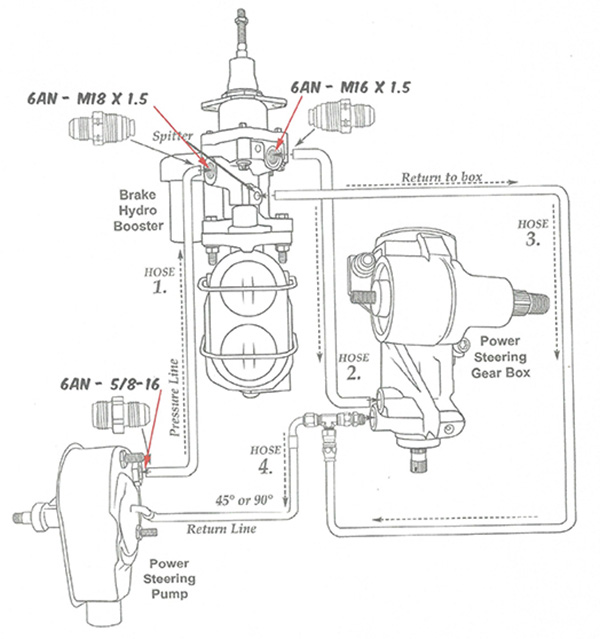Part Name: Hydraulic brake booster , Hydro-boost Units, Hidrobooster Frenos
Part Number: 19212466
Applications:
Chevrolet C10 Pickup 1982-1983
Chevrolet C10 Suburban 1983
Chevrolet C20 Pickup 1982
Chevrolet C30 Pickup 1979-1981
Chevrolet G30 1979-1993
Chevrolet K10 Pickup 1982-1983
Chevrolet K10 Suburban 1983
Chevrolet K30 Pickup 1979-1981
Chevrolet K5 Blazer 1981-1983
Chevrolet P20 1982-1983
Chevrolet P30 1979-1996
GMC C1500 Pickup 1982-1983
GMC C1500 Suburban 1983
GMC C2500 Pickup 1982
GMC C3500 Pickup 1979-1981
GMC G3500 1979-1993
GMC JIMMY 1981-1983
GMC K1500 Pickup 1982-1983
GMC K1500 Suburban 1983
GMC K3500 1979-1981
GMC P3500 1979-1996
What is Hydraulic brake booster?
A hydraulic brake booster, also known as a hydro-boost is an integral part of a vehicle's braking system. It's designed to help drivers hit the brakes more easily, and thus stop more easily. The hydraulic brake booster works with hydraulic pressure from the power steering pump or a separate hydraulic pump. This pressure is used to amplify the force the driver is applying to the brake pedal. When the brake pedal is depressed, hydraulic pressure increases, which increases the force applied to the master cylinder. This amplified force enables faster, more effective braking, especially in situations where the driver needs to stop suddenly or apply maximum braking force. Additionally, the hydraulic brake booster improves brake feel and response, giving the driver more control over the braking system. Overall, hydraulic brake boosters are an essential part of modern vehicles, ensuring safer and more efficient braking performance.
Following is to show how it connected with the steering pump and gear box.

Differences & Advantages compare with Vacuum Boosters.
1. Power source: The vacuum brake booster relies on the vacuum pressure generated by the engine to assist in depressing the brake pedal. Hydraulic brake boosters, on the other hand, use hydraulic pressure from the power steering pump to provide brake assistance.
2. Performance: Hydraulic brake boosters generally provide better braking performance than vacuum brake boosters. The hydraulic pressure in a hydraulic brake booster is generally more consistent and reliable, resulting in a more consistent brake pedal feel and improved brake response.
3. Brake assist: Compared with vacuum brake booster, hydraulic brake booster can provide more brake assist. This is especially beneficial on heavy vehicles or vehicles with larger engines that may require extra braking power.
4. Engine Vacuum Dependency: Vacuum brake boosters depend on sufficient engine vacuum to operate effectively. If there is a vacuum leak or the engine does not generate enough vacuum, the performance of the brake booster may be affected. On the other hand, hydraulic brake boosters are not dependent on engine vacuum, which makes them more reliable in situations where engine vacuum may be insufficient.
Note: Try not to remanufacture/rebuild a used hydro-boost, because inside of the hydro-boost is too precision, one hole inside of it is even sealed just by two metals, no any rubber seals. Used parts will make the hole clearance bigger and overall dimensions might become out of tolerance, then cause a failure.

Contact: Venshan
Phone: 15086654540
Tel: 023-81702127
Email: fiverhope1@gmail.com
Add: Jinyu Road #99, Yubei District, Chongqing ,China